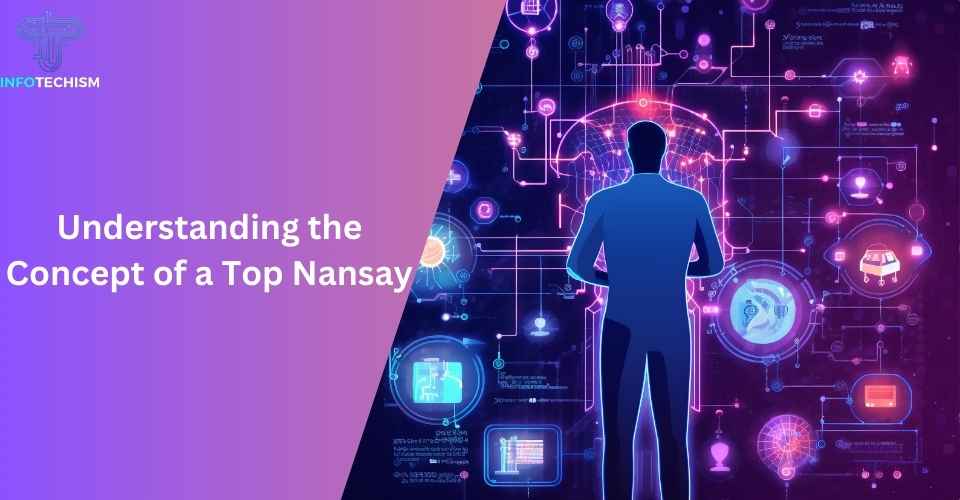A “Top Nansay” is a relatively new concept that has emerged within the domains of data science, artificial intelligence (AI), and machine learning. The term is used to identify key data points or outcomes that significantly influence the performance and efficiency of predictive models.
These data points often hold the highest importance in various analytics and optimization processes, enabling businesses and industries to harness data-driven decision-making for better performance.
Although the precise origins of the term remain ambiguous, it draws its meaning from the combination of statistical analysis, key performance indicators (KPIs), and algorithm outputs. The term “top” signifies the high-ranking or most relevant entity within its specific context.
Key Characteristics of a Top Nansay

Top Nansays stand out for their distinct features in predictive models and technological solutions. Here are some of the defining characteristics:
1. Advanced Technology
Top Nansays are often linked to high-tech solutions. Whether in software or hardware, the technology is state-of-the-art and ensures high levels of performance and efficiency. These solutions utilize cutting-edge algorithms and machine learning models to extract valuable insights from complex datasets.
2. High Efficiency
A central feature of any Top Nansay is its efficiency in performing tasks. These data points or outputs typically reflect the optimal performance of a model or system. Whether it’s increasing operational speed or improving accuracy, Top Nansays help streamline processes.
3. Scalability
Another important attribute of Top Nansays is their scalability. As industries deal with growing amounts of data, Top Nansays offer flexible solutions that can be scaled to meet the demands of both small and large-scale operations. This scalability is particularly important for industries like healthcare, finance, and e-commerce, where the volume and complexity of data can fluctuate.
4. User-Friendly Interface
In technological applications, Top Nansays are often supported by intuitive, user-friendly interfaces. This aspect makes them accessible even to users who may not have extensive technical expertise, thereby increasing their practical value across industries.
5. Integration Capabilities
Top Nansays are designed to integrate seamlessly with existing systems and processes. This ability to integrate ensures that they can work in harmony with other technologies and platforms, thereby increasing their flexibility and utility in various contexts.
Importance of Top Nansays Across Industries
Top Nansays have become a crucial element in several industries, enabling businesses to make informed decisions based on data analysis and insights. Here’s how they are applied in different sectors:
1. Finance
In the finance industry, Top Nansays are used to identify high-value customer segments, optimize investment strategies, and manage risks more effectively. By analyzing financial data, these insights help banks and financial institutions increase their profitability and streamline operations
2. Healthcare
Healthcare providers use Top Nansays to analyze patient data and improve treatment outcomes. For instance, hospitals can identify the best-performing medical teams or departments by analyzing surgery success rates or patient recovery times. This helps improve patient care and optimize hospital resources.
3. E-commerce
In the retail and e-commerce sectors, Top Nansays play a pivotal role in analyzing consumer behavior. Companies use these insights to make informed decisions about inventory management, marketing strategies, and personalized recommendations, thus enhancing the customer experience and boosting sales.
Benefits of Leveraging Top Nansays
Adopting Top Nansay analysis offers several advantages, making it a key asset for data-driven organizations:
1. Increased Efficiency
By identifying the most significant data points, Top Nansays help optimize various processes, from customer segmentation to product development. This leads to enhanced operational efficiency and faster decision-making.
2. Improved Accuracy
Top Nansays improve the accuracy of predictive models by focusing on the most impactful data points. This helps organizations reduce errors and make more reliable predictions, especially in critical fields like finance and healthcare.
3. Cost Savings
By optimizing processes and improving accuracy, Top Nansays contribute to significant cost savings. This is particularly beneficial for industries that deal with large volumes of data and complex operations, such as logistics and manufacturing.
4. Better Decision-Making
Top Nansays provide actionable insights that enable businesses to make data-driven decisions. These insights are critical for strategic planning and resource allocation, ensuring that companies stay competitive in their respective markets.
5. Adaptability
The scalability and integration features of Top Nansays allow them to be adapted to various applications and industries. Whether for a small business or a large corporation, these insights can be tailored to specific needs, enhancing their practical value.
Challenges in Utilizing Top Nansays

Despite their many advantages, there are certain challenges associated with Top Nansays that organizations need to consider:
1. Data Quality
The accuracy of Top Nansay insights depends heavily on the quality of the underlying data. If the data is inaccurate, incomplete, or biased, the resulting insights can be misleading and result in poor decision-making.
2. Overfitting in Predictive Models
Focusing too much on Top Nansays in machine learning models can sometimes lead to overfitting. This means the model may perform well on training data but fail to generalize on unseen data, leading to less reliable predictions.
3. Dynamic Environments
In fast-paced industries like finance and technology, what qualifies as a Top Nansay can quickly change. Continuous monitoring and updates are necessary to ensure that these insights remain relevant and actionable.
Top Nansays represent a significant advancement in the fields of data science, machine learning, and AI. They offer valuable insights that help organizations optimize operations, improve decision-making, and stay competitive in their industries.
By focusing on high-impact data points, companies can enhance their efficiency, accuracy, and scalability. However, the successful application of Top Nansay analysis requires careful consideration of data quality, model reliability, and ongoing adaptation to changing environments.
As technology continues to evolve, the role of Top Nansays in decision-making and strategic planning will only grow in importance







